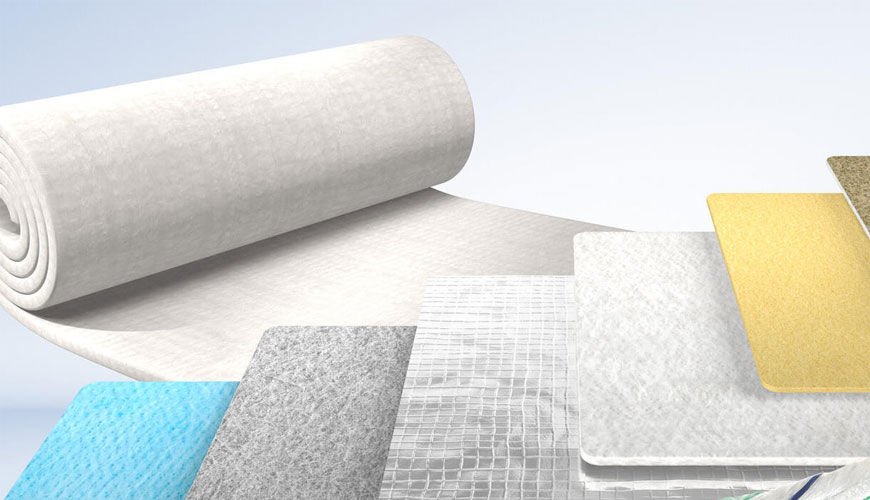Thermal insulation refers to any material that reduces heat transfer between objects in thermal contact or in a given space. The key function of insulation is to help maintain and regulate the ambient temperature by slowing down or stopping the transfer of heat from the warmer to the colder side. Insulation achieves this through increasing the resistance to conductive, convective or radiative heat transfer.
Common Insulation Materials
There are various common materials used for thermal insulation in both residential and commercial construction. Let’s take a closer look at some of the most popular Thermal Insulation Materials options:
Fiberglass Insulation:
Fiberglass insulation is one of the most widely used forms of thermal insulation globally. It is made from extremely fine fibers of glass and bonded together using a resin or adhesive. Fiberglass comes as batts, rolls or loose-fill that can be pumped between wall cavities. It has a high R-value per inch and is resistant to mold, mildew and moisture. However, fiberglass can cause itchiness and respiratory issues if inhaled.
Mineral Wool Insulation:
Mineral wool insulation is made from molten rock or slag and is environmentally sustainable. It comes as batts, blankets or loose-fill. Mineral wool has high fire resistance and soundproofing ability. One downside is that blown mineral wool can cause similar respiratory issues as fiberglass if particles are inhaled.
Spray Polyurethane Foam (SPF):
SPF is a liquid that reacts and expands many times its own volume to form rigid insulation. It adheres perfectly to any surface and air seals all cracks and gaps. SPF has an extremely high R-value per inch and can reduce air leakage effectively. However, it is more expensive than other options and may have stricter installation guidelines.
Cellulose Insulation:
Cellulose insulation is made from recycled paper and uses newspaper as its primary component. It is widely available as loose-fill insulation that can be dense packed between wall cavities. Cellulose is environmentally friendly, controls moisture well and has good soundproofing. One downside is it must be installed properly to avoid settling.
Polystyrene Insulation:
Polystyrene comes as rigid foam boards or loose beads. It has water resistance and will not spoil, rot or degrade over time. Polystyrene has an excellent moisture barrier and R-value. However, it is not a good choice for applications where fire resistance is critical. The foam also emits styrene gas during production.
Hemp-Based Insulation
Hemp insulation uses the husks of the hemp plant to provide natural insulating properties. It has mold resistance, controls moisture movement effectively and offers thermal and acoustic insulation. Hemp is also carbon negative and renewable. The main drawback is availability as it currently has limited production.
Where to Use Different Thermal Insulation Materials
Now that we have covered the most common insulation types, let’s discuss where each option would be suitable for installation:
Fiberglass, mineral wool and cellulose – suitable for wall cavities, floor and ceiling insulation
SPF – Best for rim joists, ductwork sealing, hard-to-reach areas and projects requiring air sealing
Rigid foam boards – Ideal for basement and crawl space walls, outdoor applications like sheds
Loose-fill cellulose/fiberglass – Attics, walls, ceiling or floor cavities that allow dense packing
Hemp – Walls and attics where breathable and moisture regulation properties are important
Batts and blankets – Standard wall, ceiling and floor cavity applications
Choosing Insulation Based on Projects and Climate
When selecting insulation, it’s important to consider:
Climate – Colder climates require higher R-values to prevent freezing and condensation
Project type – Renovation vs new construction, interior vs exterior applications
Moisture resistance – Areas like crawlspaces demand materials to prevent dampness
Fire ratings – Follow code requirements based on material use and occupancy
Easy installation – Some materials like loose fills require proper equipment
Budget – Materials like SPF or rigid foams cost more initially but offer long-term value
So in summary, fibers like fiberglass and cellulose generally perform well across most projects, while specific materials like SPF, rigid foams or hemp suit certain jobs or climates better due to their properties. Doing research enables choosing insulation wisely for maximum comfort and energy savings.
Importance of Proper Installation
No matter the insulation type, proper installation techniques are critical to achieving the expected R-value and preventing issues like condensation down the line:
Ensure complete fill of all cavities leaving no gaps or voids which compromise performance.
Install insulation smoothly and level – do not bunch or unevenly fill spaces which can settle over time
Address air sealing and use vapor barriers/retarders as specified based on climate to stop moisture infiltration.
Follow manufacturers’ installation instructions closely, especially for critical areas like attics.
Use approved fasteners or methods for securing batts, boards or blankets for durability.
Wear proper safety equipment per product when handling materials with potential respiratory hazards.
Following installation best practices ensures optimal thermal insulation for years to come with any type of material used. Taking the time to do it right pays off in energy savings and avoided problems down the line.
With the variety of Thermal Insulation Materials options available today, selecting the appropriate insulation and installing it correctly allows tailored solutions for effective thermal regulation in any project. Doing research enables choosing materials suited for specific climate conditions, budgets and desired results. Proper insulation is a foundational part of building an energy efficient, comfortable and durable home.
Note:
1. Source: Coherent Market Insights, Public sources, Desk research.
2. We have leveraged AI tools to mine information and compile it.




